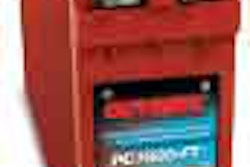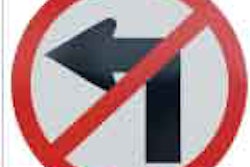United Rentals Inc. has announced financial results for the fourth quarter and full year 2010. For the fourth quarter, total revenue was $597 million and rental revenue was $497 million, compared with $557 million and $450 million, respectively, for the fourth quarter 2009.
2010 highlights
- Rental revenue increased 10.4 percent for the fourth quarter 2010, compared with the fourth quarter last year, reflecting year-over-year increases of 1.2 percent in rental rates and 14.3 percent in same store rental revenues.
- Time utilization for the fourth quarter 2010 was 69.3 percent, an increase of 7.5 percentage points from the same period last year, and a fourth quarter record for the company. Time utilization for the full year 2010 was 65.6 percent, an increase of 4.9 percentage points from 2009, and a full year record for the company.
- Free cash flow was $227 million for the full year 2010, compared with $367 million for 2009. Full year net rental capital expenditures (defined as purchases of rental equipment less the proceeds from sales of rental equipment) were $202 million, compared with $31 million in 2009.
- SG&A expense decreased by $4 million for the fourth quarter 2010 year-over-year, and decreased by $41 million for the full year 2010 compared with 2009.
- Cost of equipment rentals, excluding depreciation, increased by $25 million for the fourth quarter 2010, compared with 2009, including an $18 million non-cash charge to increase the company’s self-insurance reserve. For the full year 2010, cost of equipment rentals increased by $14 million, reflecting higher transaction volume and the self-insurance charge, substantially offset by structural cost savings.
- For the full year 2010, the company recognized $144 million from sales of rental equipment at a gross margin of 28.5 percent, compared with $229 million from sales of rental equipment at a gross margin of 3.1 percent last year.
2011 Outlook
The company provided the following financial targets for full year 2011:
- An increase in rental rates of at least 5 percent year-over-year;
- An increase in time utilization of approximately 1 percentage point year-over-year; and
- Free cash flow in the range of $10 million to $50 million, including net rental capital expenditures of between $425 million and $475 million. Gross rental purchases are anticipated to be approximately $625 million.
CEO Comments
“We once again outperformed our markets, with double-digit increases in rental revenue and volume, and record time utilization for the quarter,” Michael Kneeland, chief executive officer of United Rentals, said in a written statement about earnings. “Underlying these numbers is a systemic focus on profitability that has helped us limit costs and turn the corner on rates. Our year-over-year rate performance was positive for the first time in 15 quarters, driven by an increase in demand and our internal pricing initiatives. This is a very strong close to the year, and gives us excellent momentum going into 2011.”
Kneeland continued, “This year is about profitable growth for United Rentals. We are continuing to strengthen our metrics, our margins and the levers that drive them, particularly our customer service structure. Our strategy has been to stay in front of key customer segments through the worst of times, earning their confidence for exactly this point in the cycle. As a result, we expect to outpace what we see as a modest recovery in our end markets.”
2010 Financial Results
For the fourth quarter 2010, on a GAAP basis, the company reported a loss from continuing operations of $17 million, or $0.29 per diluted share, compared with a loss of $24 million, or $0.39 per diluted share, for the same period in 2009. On an adjusted basis, excluding the impact of special items, EPS for the fourth quarter 2010 was income of $0.16 per diluted share, compared with a loss of $0.21 per diluted share the prior year. The effective tax rate for the fourth quarter 2010 was 57.5 percent.
Adjusted EBITDA and adjusted EBITDA margin were $181 million and 30.3 percent, respectively, for the quarter, compared with $149 million and 26.8 percent, respectively, for the same period in 2009.
For the full year 2010, total revenue was $2.2 billion and rental revenue was $1.8 billion, compared with $2.4 billion and $1.8 billion, respectively, for the full year 2009. On a GAAP basis, the company reported a loss from continuing operations of $22 million, or $0.38 per diluted share, compared with a loss of $60 million, or $0.98 per diluted share, for 2009. On an adjusted basis, excluding the impact of special items, EPS for the full year 2010 was income of $0.33 per diluted share, compared with a loss of $0.76 per diluted share the prior year. The effective tax rate for 2010 was 65.1 percent.
Adjusted EBITDA and adjusted EBITDA margin were $691 million and 30.9 percent, respectively, for 2010, compared with $628 million and 26.6 percent, respectively, for 2009.
The company’s EPS, adjusted EPS, adjusted EBITDA and adjusted EBITDA margin for the fourth quarter and full year 2010 were all negatively impacted by an $18 million non-cash charge ($11 million after-tax) related to the provision for self-insurance reserves.
Free Cash Flow and Fleet Size
For full year 2010, free cash flow, a non-GAAP measure, was $227 million, compared with free cash flow of $367 million for full year 2009. The year-over-year decrease in free cash flow was largely the result of an increase in net rental capital expenditures.
The size of the rental fleet, as measured by the original equipment cost, was $3.79 billion at Dec. 31, 2010, and $3.76 billion at Dec. 31, 2009. The age of the rental fleet was 47.7 months on a unit-weighted basis at Dec. 31, 2010, compared with 42.4 months at Dec. 31, 2009.
Return on Invested Capital (ROIC)
The company’s ROIC metric uses after-tax operating income for the trailing 12 months divided by the averages of stockholders’ equity (deficit), debt and deferred taxes, net of average cash. To mitigate the volatility related to fluctuations in our tax rate from period to period, the federal statutory tax rate of 35 percent is used to calculate after-tax operating income. The company’s ROIC was 3.7 percent for the 12 months ended Dec. 31, 2010, an increase of 1.5 percentage points from the same period last year.
Conference call
United Rentals held a conference call about the results on Feb. 2, 2011. The conference call has been archived at www.unitedrentals.com, where it will be archived until the next earnings call.
Non-GAAP measures
Free cash flow, earnings before interest, taxes, depreciation and amortization (EBITDA), adjusted EBITDA, and adjusted earnings per share (adjusted EPS) are non-GAAP financial measures as defined under the rules of the SEC. Free cash flow represents net cash provided by operating activities, less purchases of rental and non-rental equipment plus proceeds from sales of rental and non-rental equipment and excess tax benefits from share-based payment arrangements, net. EBITDA represents the sum of net income (loss), loss from discontinued operation, net of taxes, provision (benefit) for income taxes, interest expense, net, interest expense-subordinated convertible debentures, net, depreciation of rental equipment and non-rental depreciation and amortization.
Adjusted EBITDA represents EBITDA plus the sum of the restructuring charge and stock compensation expense, net. Adjusted EPS represents EPS plus the sum of the restructuring charge, the gains/losses on the repurchase/redemption of debt securities and retirement of subordinated convertible debentures, and the asset impairment charge. The company believes that: (i) free cash flow provides useful additional information concerning cash flow available to meet future debt service obligations and working capital requirements; (ii) EBITDA and adjusted EBITDA provide useful information about operating performance and period-over-period growth; and (iii) adjusted EPS provides useful information concerning future profitability. However, none of these measures should be considered as alternatives to net income, cash flows from operating activities or earnings per share under GAAP as indicators of operating performance or liquidity. Information reconciling forward-looking free cash flow to a GAAP financial measure is unavailable to the company without unreasonable effort.













